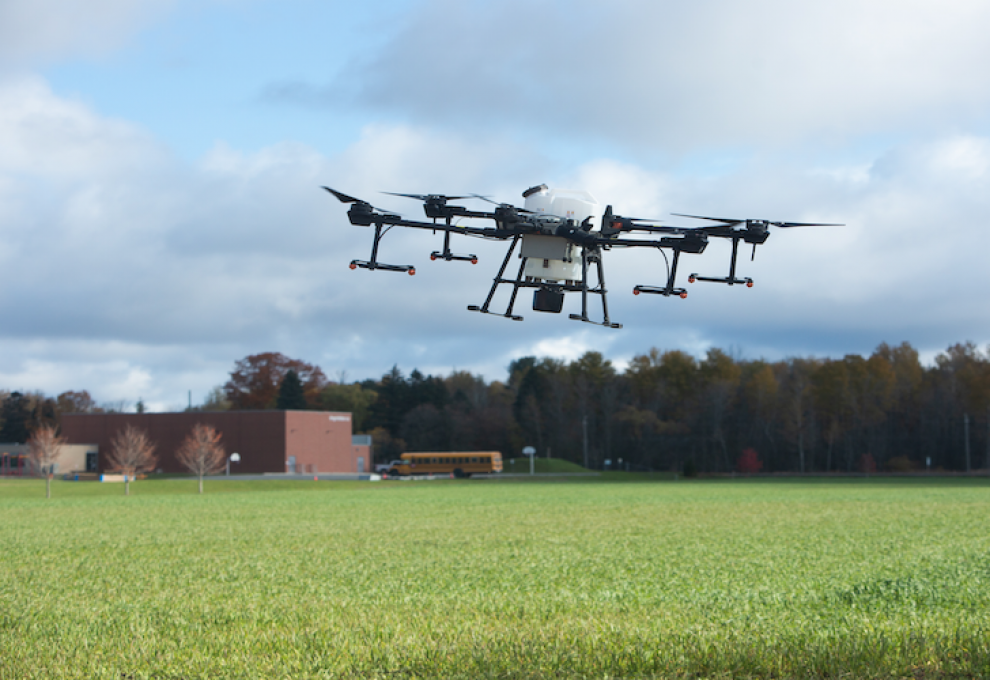
It’s been one heck of a year in Canada - and all of North America, in fact - as far as weather-related disasters go. November’s record-breaking rainfall and flooding in British Columbia struck one of our nation’s leading horticulture and livestock production areas. BC and western Canada were hit by sweltering heatwaves and devastating wildfires only a few months before.
Manitoba and northern Ontario suffered drought conditions, tornadoes battered Ontario and Québec, and Atlantic Canada dealt with hurricanes and its own version of an atmospheric river weather system similar to BC’s.
Other parts of the world weren’t spared either. California, where so much of our fresh produce comes from all year round, is again dealing with historic drought. Europe, too, saw deadly floods and record-setting heatwaves, including in countries that are also important agricultural producers such as Germany, Italy and Belgium.
To me, this highlights more than ever how critical it is that we continue to be able to produce as much of our own food as possible - otherwise known as domestic food security.
The pandemic has illustrated first-hand what can happen when we are unprepared for crisis and how losing domestic production capacity puts us in a position where we have to rely on other countries to supply us with what we need.
As those of us in the industry well know, fruit and vegetable production, for the most part, is not something that can be ramped up quickly. It takes time and money to plant trees or vines, build packing and storage infrastructure, and develop processing capacity.
As a lobby organization, we continually advocate to government at all levels about the importance of maintaining a strong and competitive horticulture sector.
That includes many things we’ve long been asking for: a predictable regulatory environment that doesn’t negatively impact our competitiveness, sustainable energy policy, help dealing with labour challenges, ongoing addition of new crop protection tools as older chemistries are removed, and business risk management programming that will provide support when our sector is hit with problems beyond our control.
Each one of those topics is complex, but they’re also all connected to each other - and a guiding thread through virtually every single one of them is innovation.
Innovation in the form of automation, robotics, sensors, and artificial intelligence can simplify many labour-intensive tasks in fruit and vegetable production. Automated weeding of field vegetables or harvesting of asparagus or berry crops, for example, could go a long way to lessening grower reliance on human labour.
New crop protection tools or new plant breeding technologies that use gene editing could help make our crops more resilient to climate extremes or better able to ward off pests or diseases. This would help lessen the impact of extreme weather and give growers new options to replace older crop protection chemistries.
More sustainable alternatives to synthetic fertilizer could reduce our exposure to fluctuating prices and supply chain volatility. New types of packaging can reduce plastic use and help extend produce shelf life that will contribute to less food waste.
Innovation is expensive and risky, however, and it’s something that no part of our sector can do alone - we need government as a partner. There are a growing number of examples of government initiatives and programs now available that support research and innovation, and while that is good to see, more needs to be done.
Start-ups and entrepreneurs need better access to venture capital to help commercialize their innovations, for example. Canada’s regulatory system needs to keep pace with the speed of innovation so that discoveries can be regulated and approved for use by growers and industry in a timely fashion. That means adequate funding for organizations such as the Pest Management Regulatory Agency, the Pest Management Centre, and the Canadian Food Inspection Agency.
Growers, too, need help to put research and innovation into practice on the farm. We are willing to invest in innovation, new technologies, and new systems, but we need our operations to be financially viable to do so.
And that’s why we need the fruit and vegetable industry to be competitive and sustainable if we hope to maintain our domestic food security in the decades to come.

Add new comment